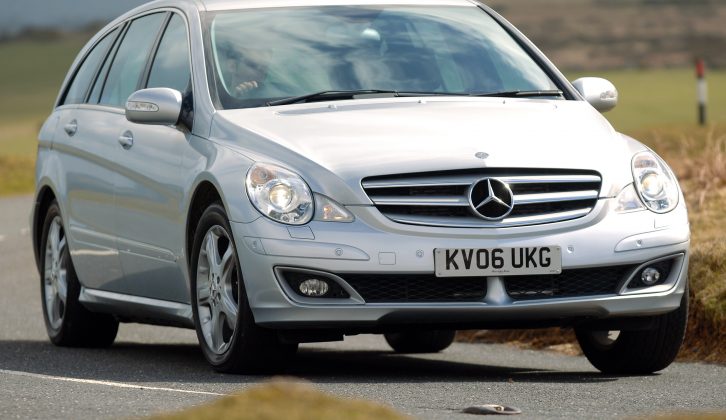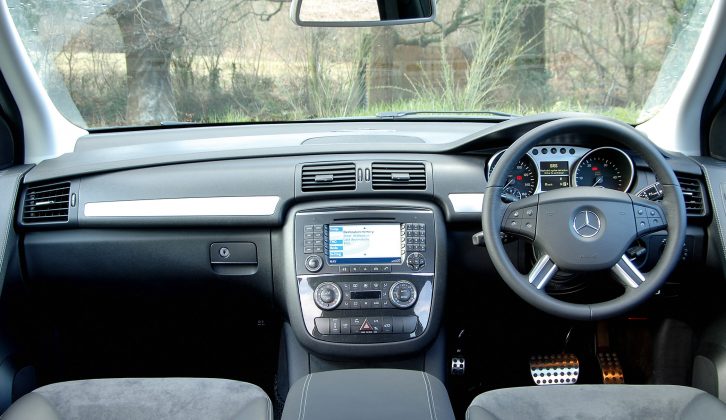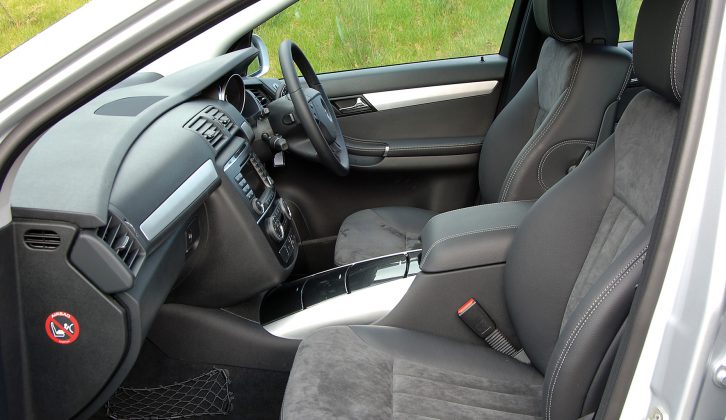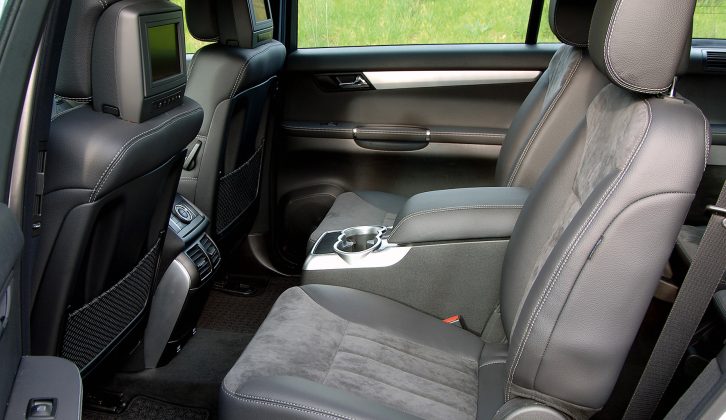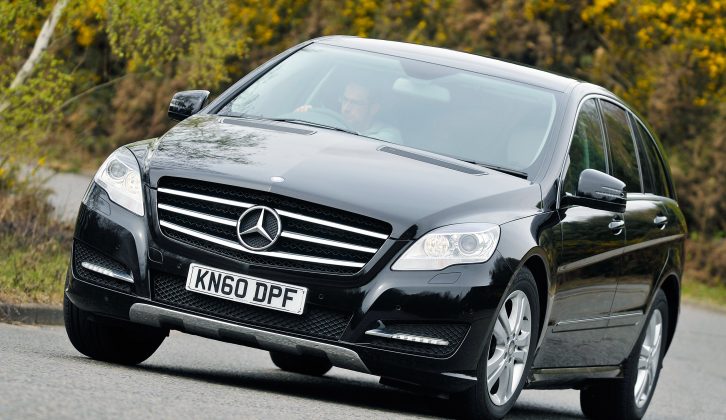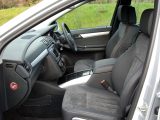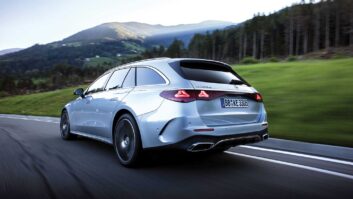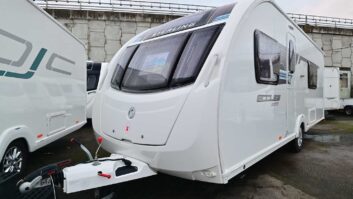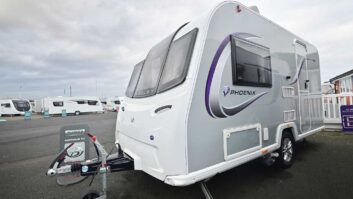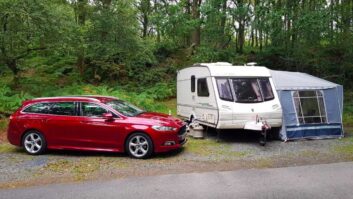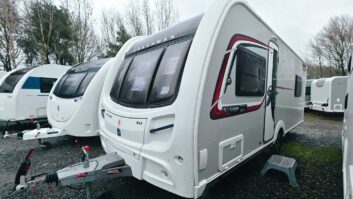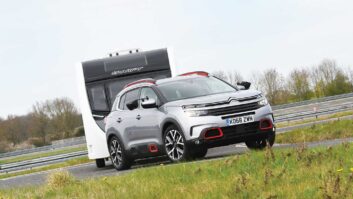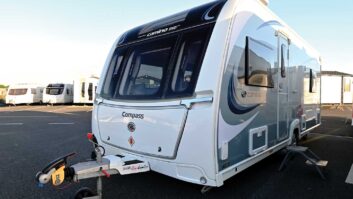The one thing you cannot easily do with a Mercedes-Benz R-Class is pigeonhole it. That may explain why it was not a great sales success – at least in the UK, where people like to know what they’re getting and what to compare it to.
If you are happy to live at the edge of the herd with a large, premium, sporty, four-wheel-drive people carrier, the R-Class makes a lot of sense. That’s especially true now, when prices no longer match its quality.
There are versions with five, six or seven seats, but all have one thing in common – they’re big cars with footprints even greater than the BMW X5 can muster. Perhaps it’s not all that suitable for residents of cities or old towns with cramped streets. Even with the essential parking sensors, manoeuvring can be like docking a supertanker. However, who cares where you park it? What matters is that the R-Class excels at cruising the open road on long journeys.
Model history
The first thing to know about the Mercedes R-Class is that it came in two lengths: for anyone who felt short-changed by a mere 16ft of prime German steel and glass, there was a long-wheelbase version that added almost 12in and two more seats.
At launch in April 2006, the most popular engine was the 3.0-litre diesel R320 CDI that produced 220bhp and 376lb ft. There were also two short-lived petrol units: a 3.5-litre 268bhp V6 and a 5.0-litre 301bhp V8, badged R350 and R500, respectively. Both were dropped in the UK after 15 months.
In August 2006, two more engines were added: the R280, a lower-power version of the 3.0 diesel that produced 187bhp and 325lb ft of torque; and the AMG R63L, a completely bonkers 6.2-litre petrol V8 that boasted 502bhp and 376lb ft inside a body adorned with big wheels and big bumpers. The R63L was dropped after nine months, and lesser models were offered with the AMG body kit.
Now an all-diesel range, R-Class underwent technical improvements in 2009. Again there were two choices based on the same 3.0-litre capacity, both offering 10-15% boosts in fuel economy over older units. Top dog was the 261bhp and 325lb ft R350 CDI engine that came with four-wheel drive. The lesser R300 CDI BlueEFFICIENCY produced 187bhp and 325lb ft and only came as a front-wheel-drive. Only one transmission was offered with all versions at the time: a seven-speed automatic.
With the cheapest R-Class costing over £36,000 new, you’d have expected plenty of kit and Mercedes-Benz didn’t disappoint. All came with traction and stability control, brake assist, climate and cruise controls, automatic headlamps and wipers, and enough airbags to make a bouncy castle. SE trim added metallic paint, electric seat adjustment and the full leather-and-walnut experience. The alternative Sport spec included 19in alloys, aluminium trim and Alcantara-covered sports seats.
Trouble spots
The most important factor with any R-Class is its history. That’s not just a full set of stamps in the service book, but evidence that the car you are considering has been in for the fair number of recalls made by Mercedes. As some of those involved electrical issues and potential fuel leaks, you’ll want to know they’ve been ticked off.
In other areas, you may hear knocking from the front suspension over rough surfaces. It is usually no more than worn anti-roll bar links, which you can probably leave alone until the next service.
More worrying are gaps in power delivery that you notice on the test drive. These can happen randomly, but only seem to affect the R280 CDI. It is likely to be caused by a failing turbo actuator, and probably means a new turbo will be needed – at up to £3500 fitted.
There are no timing belts to worry about, and the timing chains generally work for a long time, as long as service warnings haven’t been ignored.
If you like the idea of an R350 petrol R-Class, listen carefully for rattling from the timing chain or misfires when driving. These engines have suffered from failing balancer shaft sprockets, typically at 60,000-80,000 miles. This happened frequently enough for a class-action suit to be brought against Mercedes in the US. Putting it right can cost £3000-£4000.
The cars’ high-quality build helps them hide their mileage well, so clocking is a concern, not least among those used as posh cabs. Good ‘history’ should help weed out suspects. Look for physical signs as well; abnormal wear to the rear seats, the steering wheel rim and the rubber trim round the lower part of the boot are evidence of a ‘working’ car.
Verdict
It’s distinctive, prestigious and you’ll probably never park next to another one. And now you can pick an R-Class up for about 20% of what it cost new, making it a lot of car for the money. Being heavy but not over-thirsty helps make them a good choice for towing and, if you have a really big caravan, there’s a long-wheelbase version for extra stability and balance – look for the ‘L’ after its name in the ad listings.
If you’re looking for a Mercedes R-Class in the for sale pages, we think the best bet as a tow car is the R350 CDI. It’s the most powerful of the diesels and the most economical after the two-wheel-drive R300, returning around 33mpg. That’s not half bad for something well north of two tonnes. Sport spec looks best.
And however tempting the AMG-tuned version’s 502bhp might sound, 17mpg solo kills the idea. That’s even if you track down one of the few R63Ls that came to the UK, so we’d steer clear of this model.
What you need to know
Early R-Class models have dipped below £7000, but beware of well-used airport taxis! For another £1000 or so you’ll find good examples with full histories and under 100,000 miles on the clock. There’s no appreciable difference between values of petrol and diesel models, largely because there are so few of the former about; more than 90% of R-Classes sold in the UK were diesels.
At the top end, even the most expensive examples now cost less than £30,000. We spotted a particularly nice 2011 R350L CDI with top spec and only 22,000 miles covered for £26,000 — not bad for something that cost £42,000 when new.
Here are some useful figures (for a 2007 R320 CDI):
- Kerbweight 2195kg
- Towing limit 2100kg
- Towball limit 85kg
- 85% match 1865kg
We got some quotes to help you understand the costs of owning and running a Mercedes-Benz R-Class as a tow car. To fit a towball, PF Jones quotes £145 for a Witter flange towbar, £231 for a Bosal detachable towbar, fitting extra. And when it comes to servicing, Servicing Stop gave us quotes of £140 and £235 for an interim service and a full service respectively (prices may differ depending on where you live).
Now you can pick an R-Class up for about 20% of what it cost new, making it a lot of car for the money
